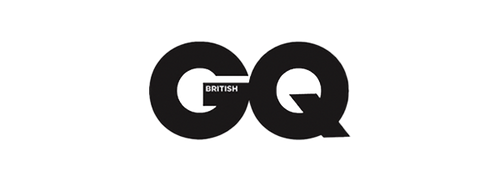Drag as an art form has existed for hundreds of years and is believed to have originated in the 16th century during William Shakespeare’s era although there are accounts of male actors dressed as women in China during the 1500s. During this period in England, women were not allowed to be actors therefore all female roles were played by men. There are two popular theories of where the term ‘drag’ came from; the first is that ‘drag’ was an acronym written in stage directions which meant ‘dressed resembling a girl’. The other theory is that the male actors often complained that their long costume skirts would drag along the stage, and it became slang amongst the community. No matter which origin theory is correct, there is no doubt that Shakespeare himself helped create drag!

Burlesque, as we know it today, rose to popularity in 1840s America with all-female dancing troops such as Lydia Thompson’s The British Blondes, who would tour the country performing parody musical skits wearing tights (which was scandalous in this era). These troops would feature attractive and underdressed women playing stereotypical patriarchal roles, mocking men and their esteemed positions through comedy whilst pushing boundaries of the female role in society in the process. Both burlesque and drag began as a comedic artform that could comment on topical social issues without too much scrutiny and with performers usually being marginalised members of society.

Drag as an individual entertainment art form of a man imitating a woman started to take shape when vaudeville increased in popularity between the 1890s and 1930s. Vaudeville began in America and was a variety show of sorts, with standalone performances from singers, dancers, jugglers, comedians, magicians and even trained animal acts. Female impersonation, particularly as a comedy act, became an integral ingredient for a successful vaudeville show, and it was even through vaudeville that the first popular drag queen emerged, Julian Eltinge.

Eltinge was unique in that his act didn’t aim to be a simple caricature of a woman but presented the illusion of actually being a woman. His act would include singing, dancing and quick costume changes but at the end, he would remove his wig to the surprise of the crowd. Eltinge’s success as a performer earned him roles on Broadway and the West End, eventually taking him all the way to Hollywood. By 1920, Eltinge was one of the highest-paid actors in the business, going as far as to overtake Charlie Chaplin at one point! Interested in learning more about Scarlett Gasque’s Hollywood inspirations? Read our Hollywood Blonde Bombshell blog here!

During the prohibition era, when both alcohol production and consumption were banned (the 1920s and 1930s), modern drag acts began to become more popular at speakeasies and underground bars and became part of gay culture. Drag allowed many who felt that they had to hide their true selves from society a form of release and joy without judgement or shame. Unfortunately, in 1933 the Hollywood Motion Picture Production Code was passed, which forbade men impersonating women as society began to see it as a perversion. Despite this blow, drag continued to thrive in underground gay clubs and bars, with varied acts that included singing, dancing and even burlesque.

When we think of burlesque today, we think of glamorous showgirls who perform classy stripteases, often playing with their audiences and usually have an element of comedy. However, burlesque originated as a type of parody, and could be literary, dramatic or musical with the intention to make their audience laugh by poking fun at more serious pieces of art or the treatment of an artist's muse. Burlesque originates from the Italian word burla which means a joke, ridicule or mockery. It can be argued that drag began as a type of burlesque act, as the performers would often be mocking society’s standards of women in comedic and often ridiculous ways, demonstrating the ridiculous expectations that were placed on women.

Despite drag being forced underground, it continued to thrive as an entertainment art form during the 1950s and 1960s. Drag balls, which began in the 1920s, were particularly popular during this period, especially in New York City, and became a safe space where both homosexual men and women dressed as the opposite sex and would have performance battles as well as fashion shows and beauty pageants. After the Stonewall riots in 1969, in which NYC police raided a popular gay venue and the LGBTQ+ community responded with public protests, the community was invigorated to join together as a united front and refuse to be discriminated against any longer.

After this, drag culture slowly began to enter mainstream culture with musicians such as David Bowie defying traditional gender roles with bold makeup, effeminate clothing and costumes plus bright wigs. Drag even began to infiltrate cinema once more in 1975 with the cult classic film, ‘The Rocky Horror Picture Show’ starring Tim Curry as ‘a gender-bending alien’ with the film ending on a burlesque-style performance from Curry and fellow male actor Barry Bostwick donning tight red corsets, fishnet stockings and high heels. Want to get your hands on your own corset? Shop our stunning range of burlesque-ready corsets here!
In the 21st century, drag has fully permeated pop culture with popular tv shows such as ‘Ru Paul’s Drag Race’ and ‘The Boulet Brothers’ Dragula’ as well as the global phenomenon of drag brunches and drag cabaret shows. Burlesque has also evolved, and what was once a traditionally feminine art form is now embraced by all genders, with many drag performers such as Violet Chachki using burlesque as a vehicle to express their drag identity. Drag performances take many forms but the history of drag is undeniably forever intertwined with the history of burlesque.

Enjoy our history lesson? Read our History of Corsetry blog here, where you can learn more about where corsets came from and how they evolved into the stunning pieces we treasure here at Scarlett Gasque!














